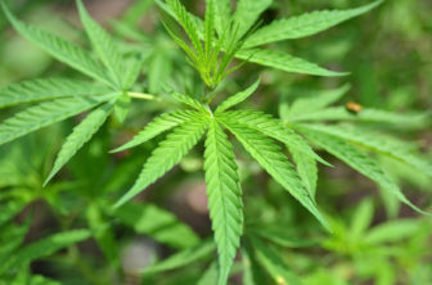New Report Shows Recreational Marijuana Revenue Volatile in Many States

Audio By Carbonatix

We-Ha.com file photo
Estimates offered by marijuana-legalization advocates are that Connecticut could raise as much as $60 million in the first fiscal year and $170 million in the second after taxation of marijuana sales for recreational use.
By Keith M. Phaneuf and Jenna Carlesso, CTMirror.org
While Connecticut opted not to legalize and tax recreational marijuana sales this year, many lawmakers saw the pot market as a revenue source that could rake in tens of millions of dollars annually for the state’s coffers.
But a new analysis by Pew Charitable Trusts found that states with legalized pot sales are struggling to predict how much they can haul in on an annual basis.
“Forecasting revenue from a product that was illegal just a few years ago, and remains so under federal law and in most states, presents a unique challenge for state budget planning,” the report’s authors wrote.
In Nevada’s first six months of collecting marijuana taxes, funding came in 40 percent higher than finance officials had expected. By contrast, revenue from cannabis taxes in California was 45 percent below projections during the first six months of collection.
Analyzing marijuana markets that were illegal in all states five years ago has been a challenge, the report says, let alone determining what price consumers will accept and predicting how the market might grow. By comparison, states can draw from decades of experience when forecasting alcohol and cigarette tax receipts.
Complicating that further is a growing diversity of cannabis products, unreliable polling data on drug usage and new competition among bordering states developing each year.
Legal marijuana sales began in Alaska in October 2016. Ken Alper, who directed the tax division of Alaska’s Department of Revenue until December 2018, told Pew analysts that polls were problematic when it came to developing revenue estimates. “Clearly if some random person calls on the phone and asks, ‘Have you smoked marijuana?’ at a time when it’s illegal, many people are inclined to lie,” Alper said.
Oregon became one of the first states to conduct an official forecast of marijuana revenue when it did so in 2017. Josh Lehner, senior economist with Oregon’s Office of Economic Analysis told analysts that using polls to gauge how pot consumption patterns might change was even trickier than projecting initial drug use.
“Sixty percent of Oregonians say they’ve had a drink in the last month. Twenty percent say they’ve used marijuana,” Lehner said. “Does marijuana go all the way up there, where the majority of Oregonians say they’ve used it in the past month? That’s the big-picture uncertainty.”
Another x-factor for revenue forecasters involves the diversity of marijuana products, Pew analysts wrote.
“Recreational cannabis products have diversified beyond the raw, cut plant to include oils, extracts, and edibles – the popularity of which has varied by state,” the report states. And potential pot consumers, who may not be familiar with all of these, may prefer one product while disliking another.
The report says consumption in Washington has shifted toward extracts while Colorado “has seen strong growth in concentrates and edibles. Just as forecasters consider changing demands for beer, wine, and spirits when projecting revenue from alcohol taxes, they are trying to do so with marijuana. But given how new these products are, analysts have little available data with which to gauge trends.”
The prices for cannabis products clearly impact consumption, and states still are struggling to find a price that maximizes tax revenues. Licensed businesses, unlike black market dealers, must pay taxes, fees and other regulatory costs. And as these expenses are built into the retail price of marijuana, it can affect stores’ ability to compete with illegal dealers.
The California Cannabis Advisory Committee found that the state’s legal marijuana market was not an “attractive alternative to the black market, in large part due to higher prices,” Pew analysts wrote.
Though Connecticut legislators didn’t legalize recreational marijuana sales this year, the Finance, Revenue and Bonding Committee endorsed an estimate from nonpartisan state analysts in May that first-year sales would generate about $41 million in tax receipts.
This estimate was contingent upon Connecticut imposing a rate similar to that established in neighboring Massachusetts.
The Bay State imposed a 17 percent state levy on pot – a 10.75 percent excise tax and a 6.25 percent sales tax. In addition, Massachusetts cities and towns can impose a 3 percent local surcharge.
But estimates offered by marijuana-legalization advocates are that Connecticut could raise as much as $60 million in the first fiscal year and $170 million in the second after taxation of marijuana sales for recreational use has begun.
Sen. John Fonfara, D-Hartford, co-chairman of the Finance, Revenue and Bonding Committee, said it wasn’t an accident that his panel endorsed a conservative revenue estimate for tax receipts tied to marijuana sales.
Fonfara has argued that should Connecticut legalize and tax pot transactions, some of those revenues should be dedicated to its poor urban centers. “This would be an opportunity to truly transform these communities, and I’d rather the number we rely on be conservative and predictable. I don’t want to wow them promising lots of money one year and the next year offer half of that.”
Deputy House Minority Leader Vincent J. Candelora, R-North Branford, opposes legalization of marijuana for recreational use, and says his primary objection rests with the “negative societal impacts.”
But Candelora, a veteran member of the finance committee, also said the last thing Connecticut needs is another highly volatile revenue stream in its budget.
Nearly one-third of all state income tax receipts come not from paycheck withholding, but from quarterly filings. And those are dominated by capital gains, dividends and other investment earnings – a revenue stream that routinely grows or shrinks by double-digit percentages.
And while Connecticut’s share of video slot revenues from tribal casinos had been stable for years, competition from out-of-state gaming centers has this source of funds eroding quickly as well.
Nonpartisan analysts project the state’s share this fiscal year will be $226 million, $47 million or 17 percent less than it received just two years ago.
“There are a lot of revenue sources in the state of Connecticut that have a lot of volatility to them and it has taken me a decade of working with the legislature to get people to realize the money will fluctuate from year to year,” Candelora said.
But many lawmakers, he added, still aren’t shy about increasing spending significantly, gambling unstable revenue streams won’t come up short.
“When the next recession hits we are going to be ill-prepared to deal with it,” he said.
Reprinted with permission of The Connecticut Mirror. The authors can be reached at [email protected] and [email protected].
Like what you see here? Click here to subscribe to We-Ha’s newsletter so you’ll always be in the know about what’s happening in West Hartford!




[…] New Report Shows Recreational Marijuana Revenue Volatile in Many States https://www.we-ha.com […]